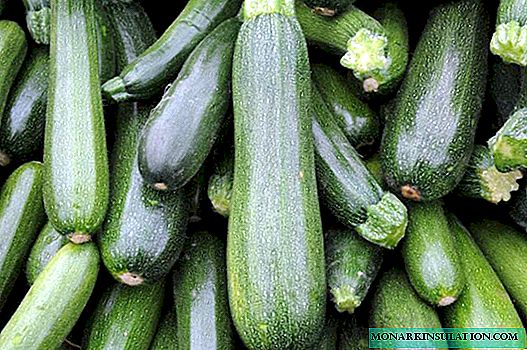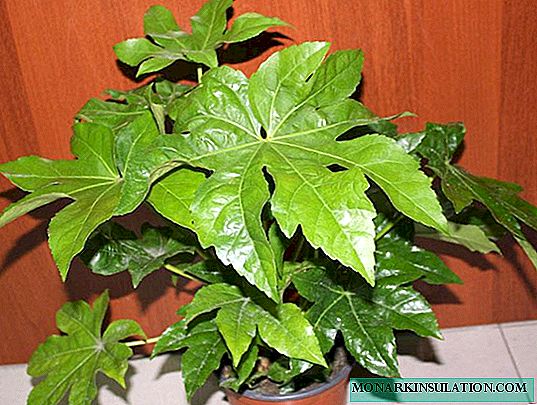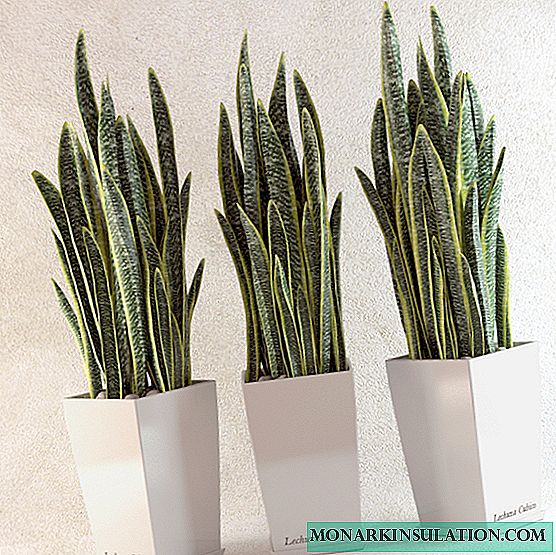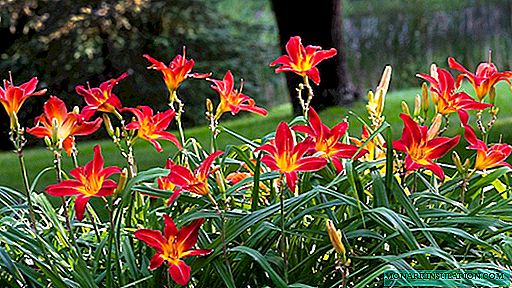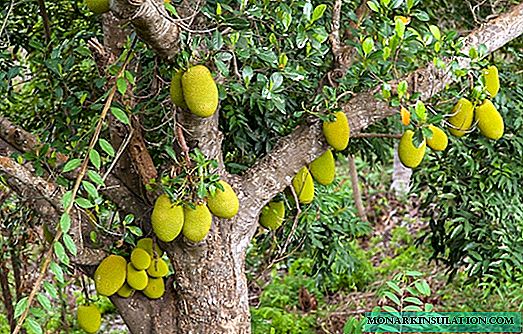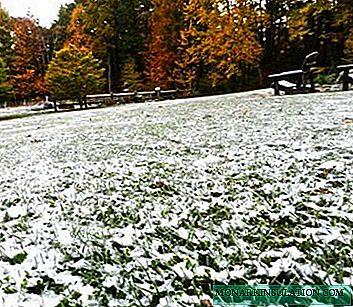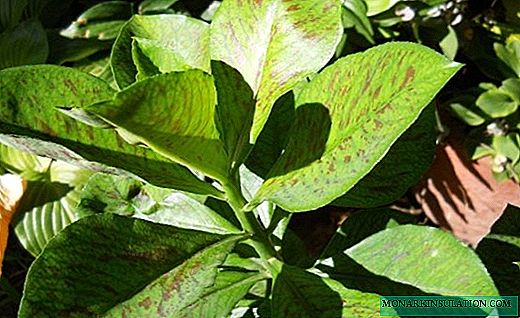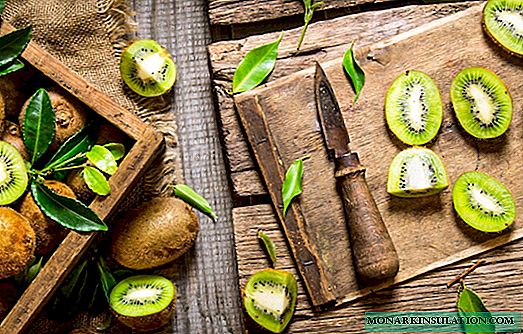
Original kiwi fruits are very much appreciated for their great taste, exquisite aroma, high vitamin content, excellent transportability and long-term storage for several months. This useful and unpretentious plant feels great in the gardens of the southern regions of Russia and Ukraine. You can grow it in indoor conditions or in a greenhouse.
Kiwi - Chinese Actinidia
Kiwi is the commercial name for the fruits of the Chinese Actinidia from the Actinidian family. In the wild, this large woody vine with leaves falling in winter grows in the subtropical forests of southern China. In nature, Chinese actinidia creepers reach 10 meters in length, climbing high into the crowns of trees.
Large wide leaves of kiwi look very unusual and attractive. This liana gives a lot of shade, it is good for landscaping courtyards, pergolas and arbors in the southern zone.

Kiwi - deciduous liana with large leaves
Kiwi fruit is a juicy berry covered with a slightly hairy brownish skin, under which lies a delicious and fragrant pulp. The peel is rough and not used for food, only the pulp of the fruits is edible. Kiwi seeds are very small and numerous, they are not felt when eating, so there is no need to remove them when peeling this fruit. Fruits are oval, slightly larger than a chicken egg, weighing up to 100-150 grams.

Kiwi fruits a little larger than a chicken egg
The pulp of kiwi fruits is beautiful bright green in color, in most varieties it still remains green even when fully ripened, although varieties with yellow flesh have recently begun to appear. It is very easy to distinguish a mature fruit from an unripe one:
- unripe fruit hard to the touch
- the ripened fruit becomes soft, and its flesh becomes transparent.
For long months of storage and transportation over long distances, the kiwi fruits are harvested slightly immature, while they are still solid. Fully ripened soft fruits are stored for only a few days, even in the refrigerator.
In order for the purchased solid kiwi fruits to ripen faster, they must be folded in a plastic bag along with several ripe apples, tie the bag and leave it in the shade for 3-5 days at room temperature.

Kiwi is an important commercial fruit crop in subtropical countries
Chinese actinidia has been grown since ancient times in the gardens of China and neighboring countries of Southeast Asia, where many local varieties have been created. But this fruit crop received world commercial significance and international popularity only in the last century, when old Chinese varieties were brought to New Zealand. An oriental outlandish liana has taken root perfectly on New Zealand land, and the local breeders managed to create varieties with especially large fruits, for the promotion of which the commercial name “Kiwi” was invented (in honor of the unique flightless bird, which is a recognized symbol of New Zealand).
Modern large-fruited varieties of Chinese actinidia are often distinguished in a separate form - a delicious actinidia, to distinguish from their wild ancestors.
Large-fruited kiwi varieties (photo gallery)

- Kiwi Abbot

- Kiwi Bruno
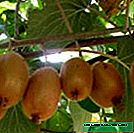
- kiwi kivaldi
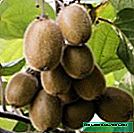
- kiwi monty
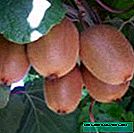
- kiwi hayward
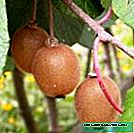
- kiwi allison
The main characteristics of large-fruited kiwi varieties (table)
| Title | Ripening period | Fruit size |
| Hayward | Late ripening | 80-150 g |
| Kivaldi | Late ripening | 75-100 g |
| Monty | Mid-season | 50-80 g |
| Abbot | Mid-season | 45-65 g |
| Bruno | Early ripe | 50-70 g |
| Allison | Early ripe | 40-60 g |
Kiwi industrial culture regions
Currently, kiwi is the most important commercial fruit crop in New Zealand, in the subtropical zone of the USA and countries of South America, in China, Japan, in many countries of Southern Europe.
A lot of kiwi fruits are now grown in Italy. I had a chance to chat with several Italian farmers, the owners of such plantations. In their opinion, the kiwi culture is less troublesome and more profitable compared to grapes traditional for those places: there are practically no pests and diseases in kiwi, so labor-intensive pesticides are not needed at all, the crop is guaranteed to be environmentally friendly and stored for much longer. For planting kiwi, just like under vineyards, you can use uncomfortable areas in the foothills and on the hillsides, and the design of the supports is not very different from grape.

Kiwi plantations in many countries successfully supplant vineyards
Kiwi grows well in the southern part of Russia: on the Black Sea coast of the Caucasus, in the Crimea, in the south of Dagestan. On the southern coast of Crimea, in Sochi and in Krasnodar, kiwi successfully winters without shelter, in the more northern regions of the liana for the winter it is necessary to remove from supports, lay on the ground and cover.
How does kiwi grow in Yalta (video)
You can grow kiwi in the Black Sea regions of Ukraine. Successfully fruitful amateur plantings of this creeper also exist in Transcarpathia. In Kiev, Chinese actinidia sometimes bears fruit in some particularly successful years, but freezes significantly during frosty winters. In Belarus and central Russia, the cultivation of kiwi is possible only in greenhouse conditions.
What is a mini kiwi
In recent years, many garden nurseries use the name "mini-kiwi" to increase consumer demand for seedlings of other types of actinidia:
- actinidia argument,
- actinidia purpurea,
- actinidia colomictus.
Compared with Chinese actinidia, these species are much more winter-hardy, especially colomictus actinidia, which grows and bears fruit without any shelters even in the Moscow Region, Siberia, and the Urals. The size of their fruits is much smaller than that of kiwi, but they are not inferior to them in taste and in the content of nutrients.
Varieties of mini-kiwi (photo gallery)
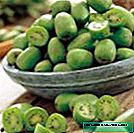
- Mini-kiwi - the commercial name for small-fruited actinidia species

- The actinidia of the argument is the largest of the mini-kiwis
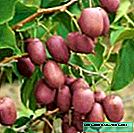
- Actinidia purpurea has unusual brightly colored fruits

- Colomict actinidia - the most winter-hardy of mini-kiwi
In my garden on the Middle Volga, for many years, the Colomict actinidia vine has been bearing fruit, which annually at the end of August yields a crop of medium-sized berries the size of a grape, with a taste and aroma like real store kiwis.
How Kiwi Flowers and Fruits
Kiwi, like all other types of actinidia, is a dioecious plant. Male and female flowers are located on different copies. Reliably determine the sex of plants becomes possible only during flowering. Vines of seed origin bloom usually 5-7 years after sowing seeds grown from cuttings and cuttings a little earlier, already 3-4 years.

Female kiwi flowers are arranged in small groups.
Female kiwi flowers are arranged in small groups. They are white or slightly cream color. In the center of each female flower, a large pestle with an asterisk-like stigma is clearly visible. The stamens surrounding it are underdeveloped, so self-pollination is impossible.

In the center of the female kiwi flower, the pestle is clearly visible, and the stamens are underdeveloped
If too many female flowers were formed and successfully pollinated on a plant at the same time, then the fruits grown from them will be small. To obtain especially large fruits, shortly after the formation of the ovaries, they are thinned out, removing excess ones.

Male flowers do not form kiwi fruits, but are necessary for pollination
Whitish male kiwi flowers are collected in a brush of several pieces on one peduncle. Kiwi is pollinated by bees and other insects, so the flowers are very melliferous. Inside the male flower, numerous stamens with pollen are clearly visible, and the pestle is underdeveloped and does not have an asterisk.

Kiwi male flowers have numerous stamens with pollen, and the pestle is underdeveloped
In Sochi, kiwi blossoms in the second half of May, the fruits ripen from mid-October to early December. Under favorable weather conditions, fruiting is annual, but in cold winters flower buds may die, and flowers and buds are often damaged by spring return frosts.
Features of growing kiwi in the open ground
When planting kiwis for every 10 plants of female fruiting varieties (Hayward, Kivaldi, Monti, Bruno, Abbot, Allison, ...) for pollination, at least 2 plants of male pollinating varieties must be planted (Matua, Tomuri, ...). The distance between the seedlings when planting is at least 2-3 meters.
To grow kiwi, you need support. Trellis is usually installed before planting seedlings. The height of the trellis is 2-2.5 meters, to tie the shoots between the pillars horizontally pull a strong wire in 1-3 rows. Formative pruning is carried out in late autumn after harvest, cutting thickening, weak and too old shoots.

For growing kiwi, trellises are made of poles and a wire stretched between them
Chinese actinidia needs high humidity of air and soil, so plantations are regularly watered. In small garden gardens you can plant plants in light partial shade to protect against the scorching southern sun. It is convenient to plant a kiwi near a gazebo or an open veranda, you will get a beautiful shady canopy of green leaves.
Without shelter, adult kiwi plants withstand short-term frosts of -15 ... -17 ° C, young specimens are severely damaged even at -10 ° C.
In regions with possible winter frosts, for better wintering, kiwi lianas can be additionally covered for the winter:
- Cover the ground near the plants with spruce branches or plastic so that the vine cannot rot from contact with the soil.
- Remove the vine from the supports and lay on the cover.
- Top cover with spruce branches or reed mats.
- Cover the insulation material with plastic wrap, fasten its edges with bricks or sprinkle with earth.

To protect against frost, kiwi can be sheltered for the winter
In the case of strong prolonged thaws, shelters must be ventilated. In spring, the shelter is removed and the vines are tied to the trellis.
Growing Kiwi at Home
If you wish, you can try to grow kiwi as a houseplant, although there is no particular sense in this:
- fruiting requires the presence of male and female specimens blooming at the same time (pollination is carried out manually with a soft brush);
- kiwi - a large vine, taking up a lot of space;
- cool wintering with a temperature of about + 5 ° C is necessary for the formation of flower buds;
- flowering occurs late, 5-7 years after sowing seeds, and to determine the sex of seedlings is possible only during flowering.
For sowing, you can use the seeds from the kiwi fruits purchased in the store:
- Withstand the fruits in a warm room until fully ripened (should become soft, with transparent flesh).
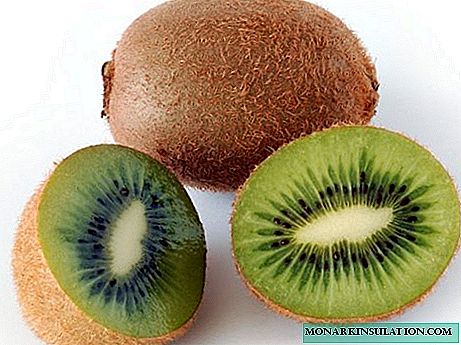
Seeds from ripe kiwi fruits can be used for sowing.
- Separate seeds from pulp by washing in clean water.
- Soak well-washed seeds for a week in a damp cloth at a temperature of about + 20 ° C, preventing drying.
- Then sow in a loose soil mixture to a depth of about 5 millimeters, carefully pour a little warm water.
- Keep crops at + 20 ... + 25 ° C, after emergence, put on a bright windowsill without direct sunlight.
Care for indoor kiwi consists of regular irrigation with settled water, preventing the land from drying out in a pot (watering more often in summer, less often in winter), weekly spraying of leaves with slightly warm spray water and annual spring transplantation. For garter of climbing shoots in a pot, a frame of thick insulated wire is fixed.
How to grow kiwi at home (video)
Reviews
Kiwi is a perennial plant that requires a cool wintering.
Odina//forum.homecitrus.ru/topic/56-kivi-aktinidiia-kitajskaia-doma-i-na-balkone/
Kiwi already at minus 10 begins to freeze.
Maroussia//forum.homecitrus.ru/topic/21374-vyraschivaem-kivi-aktinidiiu-kitajskuiu-v-otkryto/
I cover as well as grapes ... I did not notice a difference in winter hardiness of grapes and kiwi. The only minus is that the kiwi wakes up somewhat earlier than the grapes, which means that the probability of getting under the frost is much higher.
Alexey Sh//forum.vinograd.info/showthread.php?t=3289
Chinese actinidia - this is the real kiwi! In the Kiev Botanical, it grows, and even sometimes bears fruit
Sveta2609//www.forumhouse.ru/threads/125485/
Kiwi is a very promising fruit crop for regions with a mild subtropical climate. In a little more northern areas like the Black Earth region, shelter for the winter will help protect the vines from frost. And in the middle zone of Russia, where kiwi does not winter even under careful shelter, other actinidia species grow very well with high winter hardiness and slightly smaller than real kiwi, but no less tasty and healthy fruits.












